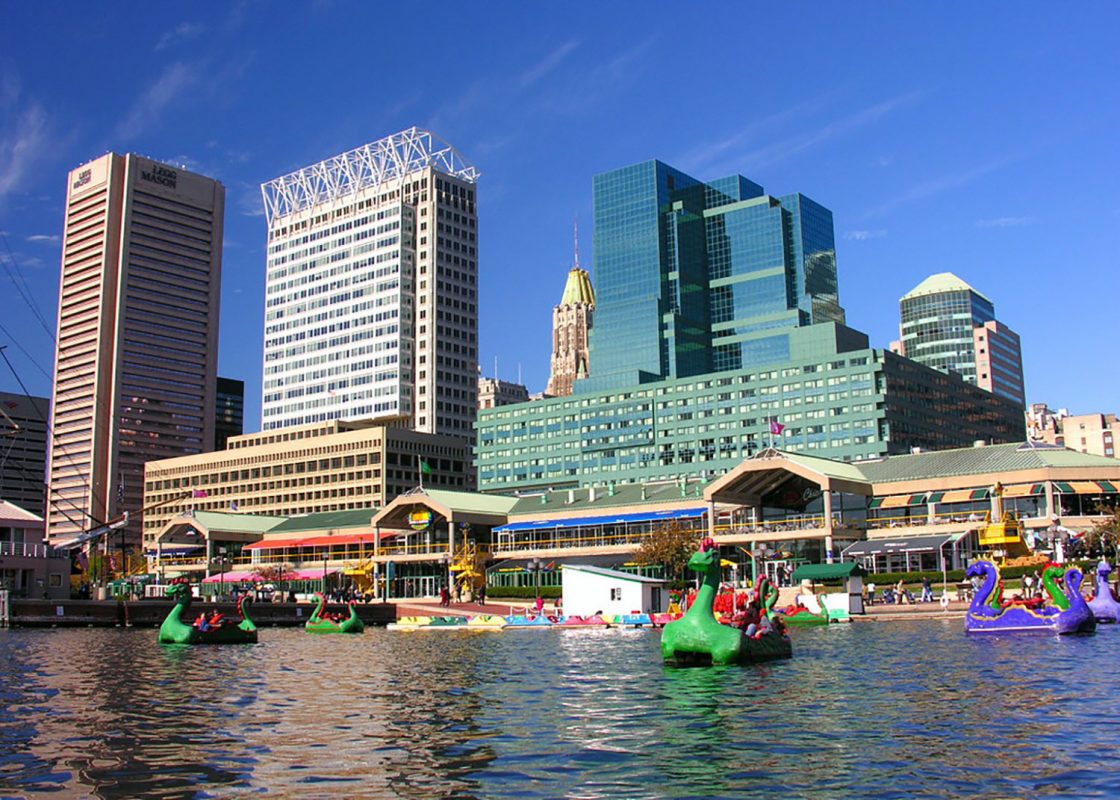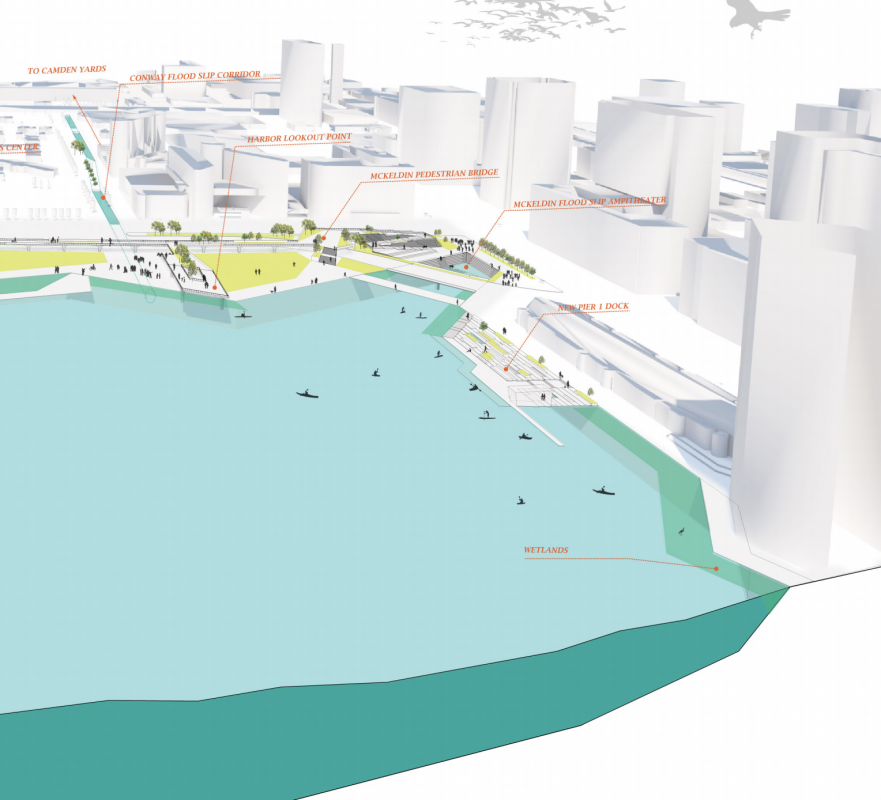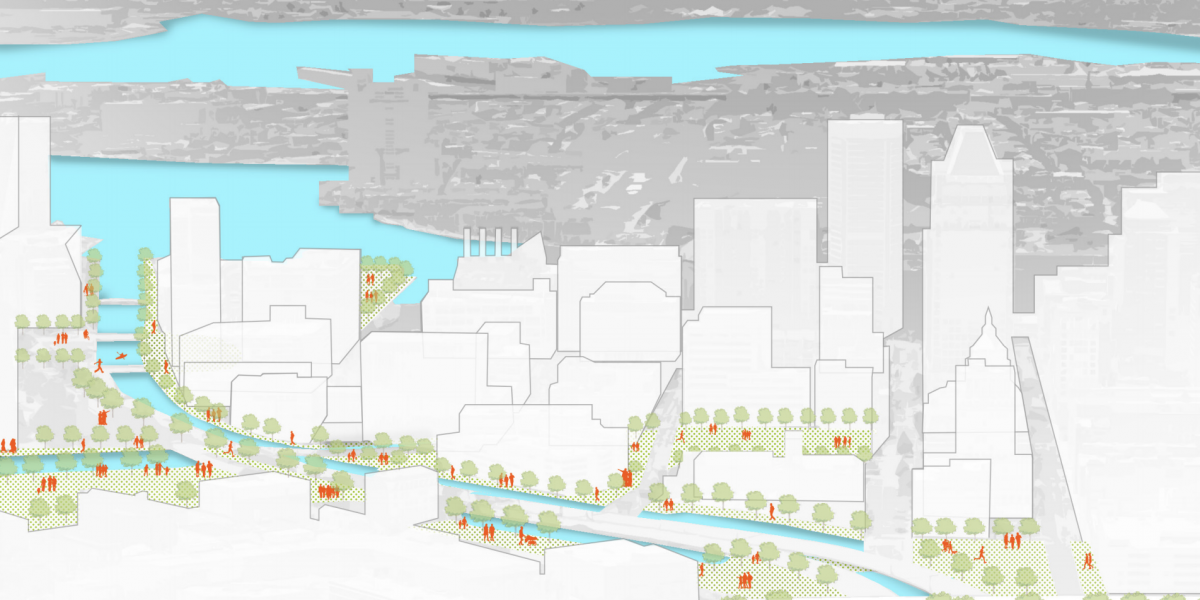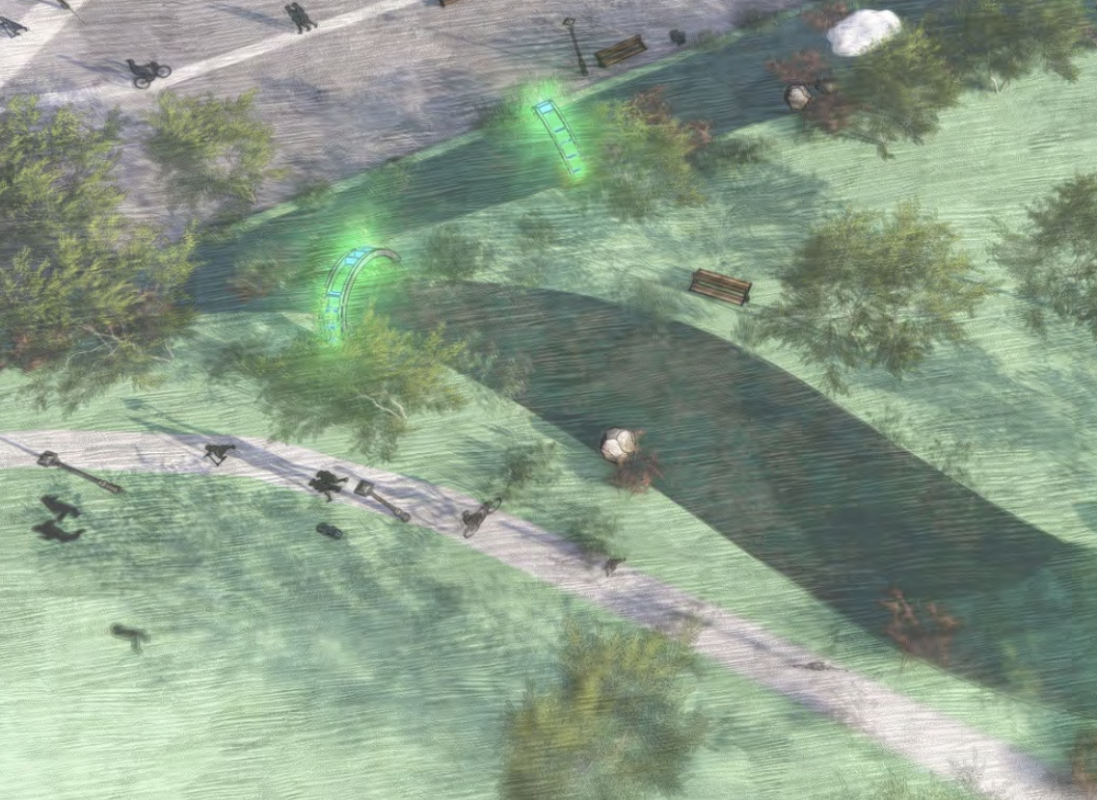
As it currently stands, Harborplace—the centerpiece of the Inner Harbor that has been plagued by a string of vacant vendors and a perceived general apathy among locals—is in a state of receivership. Essentially, this means that the IVL Group—currently managing Harborplace—is looking to stabilize the property, devise ways to jumpstart its development, and as an effect, regain the interest of tourists and residents alike.
There is no timeline for when such a project could happen, but that doesn’t mean that those in the city who are passionate about Harborplace are sitting idly by. Recently, the Baltimore division of the American Institute of Architects (AIA) put out a call for a competition they called Edge Harbor and City, which tasked entrants with coming up with workable plans to activate the harbor and its surrounding neighborhoods to create a sense of connectivity.
“It’s a very frustrating time,” says Waterfront Partnership president Laurie Schwartz. “While I’m usually very impatient, this is such a critical part of Baltimore and a key piece of Inner Harbor that it has to be done right. We’ve got to get it right this time.”
Within the many plans submitted to the AIA competition—which will be on display at the Baltimore Museum of Industry from October 24 to November 12—throughlines emerged, as those passionate about the city came together to envision a brighter future. Here are a few key takeaways from some of the plans:
RECREATION
Architect Kelly Danz and her co-entrant and college classmate Amanda Ganginis submitted a proposal based on recreation, namely transforming the water in and around the harbor into a space where people can congregate. Their project, titled “Permeable Futures,” creates opportunities for people to interact with experiential waterways that are essentially inlets. They would flow from Conway Street to Camden Yards, into Power Plant Live, near the Science Center and Rash Field, and into McKeldin Plaza. Danz and Gangins also propose a revamped visitor’s center and a food hall similar to the newly renovated Cross Street Market.

“We are catering to residents first,” Danz says. We wanted it to be a place where city residents are going to come.”
NEIGHBORHOOD CONNECTIVITY
In fact, many participants in the competition view Harborplace as an area that feels detached from other parts of the city. Ryan Pfarr and a team at local firm CannonDesign are using what they call “bridges and stitches” to create opportunities for residents living in all parts of the city.
“I don’t know that people really feel the impact of what is occurring in the Inner Harbor right now,” he says. “There are some great things going on down there. It just doesn’t touch other parts of Baltimore.”
CannonDesign’s long-term proposal, “Stitch,” focuses specifically on the Jones Falls Valley, analyzing ways to utilize greenways that connect people to the harbor.

“We wanted to stitch across the valley and bring certain neighborhoods that have more and less development together and bridge that gap for the city,” Pfarr says. The plans also call for more bike paths and pedestrian walkways.
Vendor activation is another way to bring in residents from all walks of life. Pfarr is in favor of front-facing shops that are inviting and fill the edges of the complex a bit more.
ENVIRONMENT AND TRANSPORTATION
Another important aspect to consider with these projects is the rising sea levels that are inevitable due to global warming. Any proposal of big change will have to take this into account, and these projects have.
Pfarr’s team researched weather patterns and water fluctuation in its designs, while Morgan State University associate professor Samia Rab Kirchner and her students in the school of Architecture and Planning submitted a proposal entitled “Transect 7,” where three different “interventions” (which Kirchner describes as pedestrian pathways) would be installed to better connect neighborhoods and prepare for the changing climate.

“Water is not an edge,” Kirchner says. “It flows from upper ground to lower ground. The more barriers we put in front of it, the more devastating the effect.”
The Morgan State team also placed its emphasis along Jones Falls with three suggested interventions in Cylburn, Station North, and the Inner Harbor. At the Station North bridge, there would be a canoe stop that would allow residents to take an alternate mode of transport to the Inner Harbor as a solution to combat environmental emissions.
As Kirchner sees it, the water is there—it’s just a matter of rerouting it to benefit the city and its residents.
“It’s not creating new waterways,” she says. “It’s connecting to the old waterways that are running but are inaccessible. We believe that having access to water is a right.”